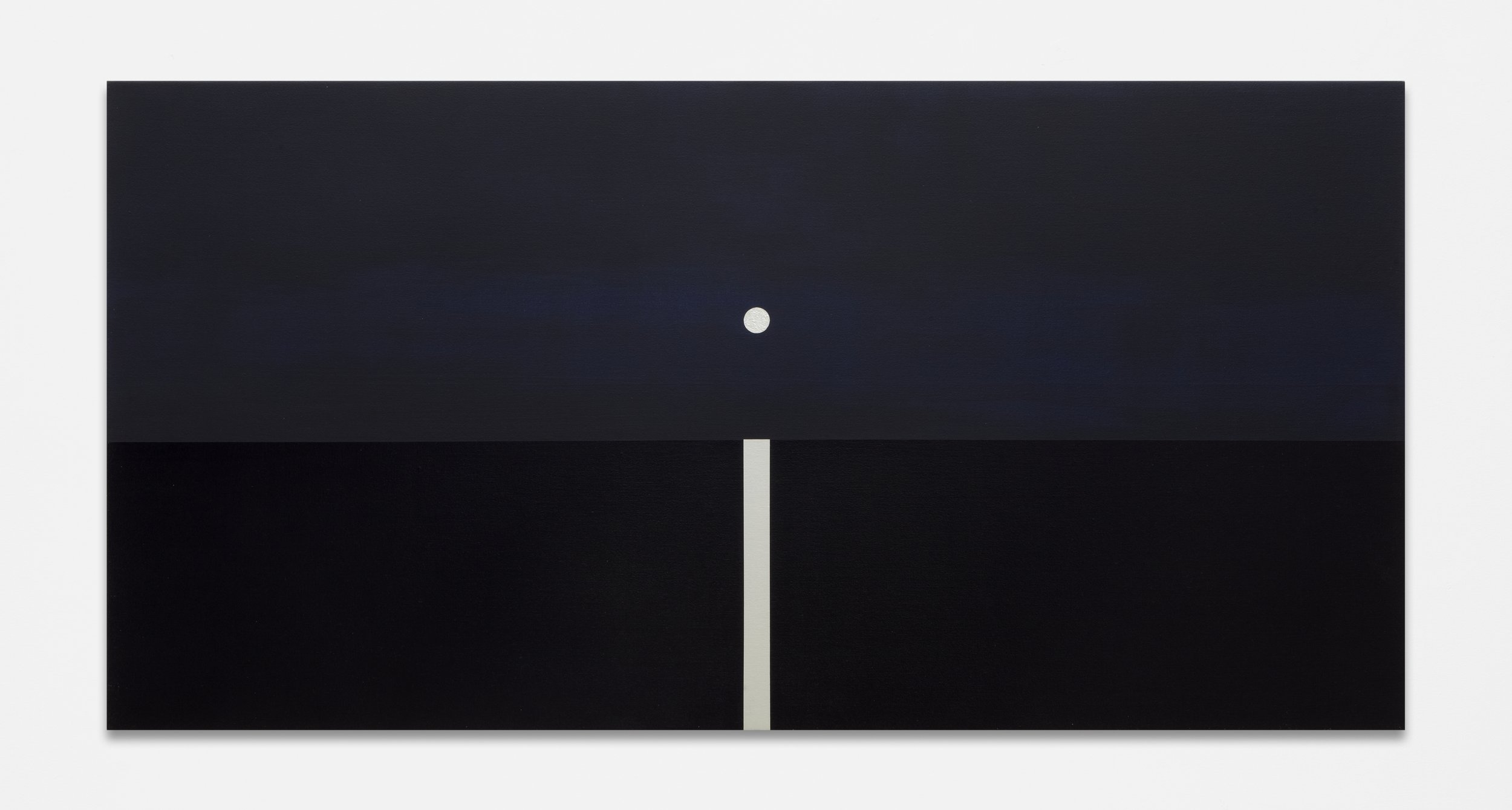Transcendental Bengston-tation
May 1—June 28, 2014
Franklin Parrasch Gallery is pleased to announce Transcendental Bengston-tation, the gallery’s second solo exhibition of works by Los Angeles-based artist Billy Al Bengston. This show comprises paintings and drawings that represent a cross section of Bengston’s career over the past 53 years. Not intended as a survey of a style or period of Bengston’s work, this exhibition describes an energy the artist has maintained throughout his life and the ways in which that energy is manifested in his art.
Bengston began making ceramics in 1949 at Manual Arts High School in Los Angeles; in 1956, he began studying under Peter Voulkos at the Los Angeles Art Institute. Upon realizing he could never match Voulkos’ ultimate mastery of the medium, Bengston switched his focus to painting. He initially worked in the abstract expressionist style of the time but quickly found it dissatisfying. The 1958 Venice Biennale, which included a selection of Jasper Johns’ iconic flag paintings, inspired Bengston to paint symbols (in one case, an iris lifted from the logo of Iris Sugar packets) and to place his imagery in the center of his field. Bengston has a penchant for defending anything that is historically founded so long as it conveniently defies what is de rigeur; thus, the centralized icon had found its advocate in the late 1950s. This compositional decision was at once strategic and rebellious, and inspired Bengston’s East Coast contemporaries to follow suit.
Bengston’s work was eventually characterized as “Pop Art” by some critics, in part because of its notable impact upon Pop luminaries including Jim Dine, Roy Lichtenstein, and Andy Warhol. Unlike his Pop counterparts, however, Bengston’s art has never been attached to the specific meanings of symbols and images. Rather, it references an aesthetic balance found in nature. Bengston eschews distinction between subject and object; his intention is to capture the viewers’ gaze. The same sense of fearless audacity that permeated Bengston’s experiences as a surfer, racer, and bon vivant, remain at play in his work, all of which emerges from meditative focus. Whether walking the edge of a surfboard cresting a 15-foot wave or weaving through a herd of racers on curving dirt tracks riding a brakeless motorcycle, Bengston’s early accomplishments as a renowned surfer and professional motorcycle racer are legendary. Referenced in both film and fiction, from Moondoggie in Frederick Kohner’s classic 1959 movie Gidget to a “gearhead who makes paintings” in Rachel Kushner’s 2013 best selling novel The Flamethrowers, Bengston’s notable athletic feats were not, by any means, ends in and of themselves. Negating fear and engaging a heightened sense of awareness within, these actions were the vehicles by which Bengston arrived at a state of intense focus.
Bengston further drew from his experiences on the racetrack and pushed past traditional painting methodologies by using the materials and tools associated with hot rod detailing. The standard to which Bengston holds the craft of painting is, in his mind, unmatched by the finishers of Rolls Royces in the 1920s. His early spray lacquer works, first shown at Ferus Gallery in 1961, created a sensation and catalyzed a revolution among Los Angeles artists who suddenly felt liberated to use materials that had never before been applied to fine art. From Craig Kauffman’s spray-lacquered acrylic bubbles of the late 1960s, to Ken Price’s enamel-painted mounds and egg sculptures, to collaborating on book projects with Ed Ruscha, Bengston championed and influenced his fellow artists as they explored the use of alternative materials.
Billy Al Bengston’s work is in the permanent collection of many public institutions in the United States and abroad, including the Museum of Modern Art (New York, NY), Solomon R. Guggenheim Museum (New York, NY), Whitney Museum of American Art (New York, NY), The Corcoran Gallery of Art (Washington, D.C.), Philadelphia Museum of Art (Philadelphia, PA), Yale University Art Museum (New Haven, CT), The Art Institute of Chicago (Chicago, IL), Contemporary Art Museum (Houston, TX), Los Angeles Country Museum of Art (Los Angeles, CA), and Centre Georges Pompidou (Paris, France). Bengston was awarded a National Endowment for the Arts Grant in 1967, a fellowship at the John Simon Guggenheim Memorial Foundation in 1975, and was a Fellow at the Tamarind Lithography Workshop in 1968, 1982, and 1987.
A fully-illustrated catalogue accompanies this exhibition.














